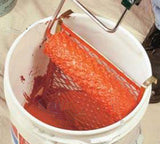Loading Your Roller or Brush with Paint
You've selected your paint, roller and brush and are prepared to start painting. Properly loading a brush or roller is extremely important in achieving the best results and is one of the simplest steps, however often times the most overlooked. Lets review proper loading techniques for both brushes and rollers.
Loading a Paint Brush
- Never dip your brush directly into the paint can to load it. This will eliminate any loose bristles or dirt elements from mixing with the new paint in the can.
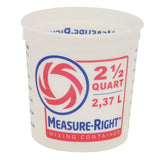 Purchase a small a paint pail available at most hardware stores for less than $3 and fill it approximately half way with your paint.
Purchase a small a paint pail available at most hardware stores for less than $3 and fill it approximately half way with your paint. - You will also want to have a piece of cardboard, approximately 12"x12" to use in this step. Now dip your bush into the paint in the pail about half way up the bristles. Lightly tap the end of both sides once or twice onto the inside wall of the paint pail to remove excess paint. NOTE: DO NOT scrape the brush across the top edge of the pail to remove paint as this defeats loading the brush.
- Take the loaded brush and gently place the tip of it in the middle of the cardboard. Push downward slightly - just enough to bend the bristles - then pull the paint to the edge of the cardboard. Once at the edge reverse the motion and pull paint to the other side of the cardboard - the same motion used to load an artists paintbrush.
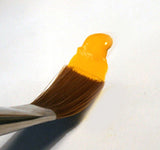
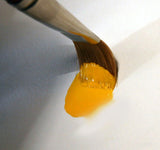
Repeat this step one more time. This will load the paint throughout all of the bristles. Be sure not to overload the brush as paint should only remain about half way up the bristles.
4. Repeat step 2 and start painting.
Loading a Paint Roller
- Our recommendation to start - do not use a regular paint tray. They are inefficient and as paint builds up and dries you will be loading dried up pieces of paint onto your roller. Purchase a simple plastic 5 gallon bucket and a bucket screen.
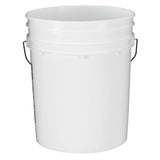
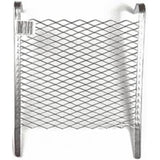
- Fill the bucket with approximately 3/4 of the gallon of paint the insert the bucket screen, ensuring the hooks hang over the side of the bucket so it does not fall into the bucket.
- Prior to loading the roller take some painters tape and use the adhesive side on the roller cover to remove any loosed fibers.
- Install the roller onto the frame.
- Dip the roller into the paint, however only enough to coat the fibers, but try not to get any paint onto the ends of the roller frame.
- Take the roller and begin to roll on the bucket screen to load the roller cover.
7. Repeat steps 5 and 6 until the roller is loaded. You will know the roller is loaded when paint is completely covering the roller, but not dripping off of it.
8. You are now prepared to starting rolling paint.

 Purchase a small a paint pail available at most hardware stores for less than $3 and fill it approximately half way with your paint.
Purchase a small a paint pail available at most hardware stores for less than $3 and fill it approximately half way with your paint.



